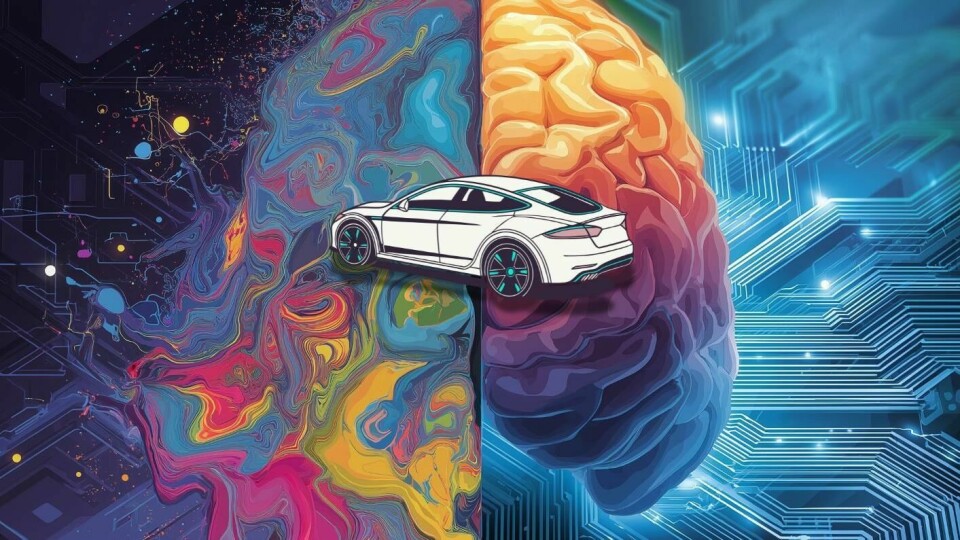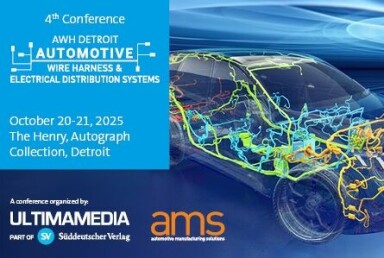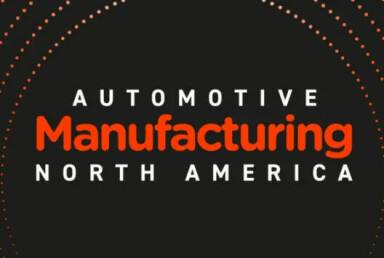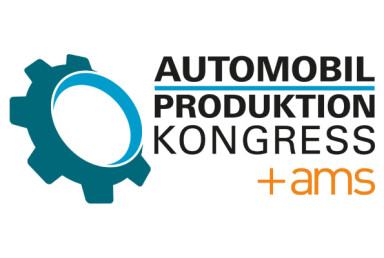Making complexity actionable on the factory floor
Automotive expert Tunç Kip says human-machine interfaces are essential in boosting flexibility, quality, and performance in global automotive manufacturing
From the factory floor to upstream design, digital human-machine interfaces are enabling smarter, leaner, and more flexible vehicle production - but humans need to be at the centre of gravity for it to work.

The modern automotive factory is more connected, complex and fast-moving than ever before. To keep pace with rising product variation, shorter development cycles and the shift towards electrification, manufacturers are turning to an increasingly vital yet often underestimated solution: the human-machine interface (HMI).
For Tunç Kip, a seasoned automotive consultant with decades of experience in product development and advanced manufacturing, HMIs are no longer just operator screens or control panels; they are now fundamental to how people and production systems work together for maximal efficiency. Well-designed interfaces are helping OEMs and Tier 1s build more flexibly, reduce ramp-up times, prevent errors and embed quality at the point of assembly.

From guided visual prompts and real-time feedback to AR overlays and integrated MES (Manufacturing Execution Systems) dashboards, Kip points to a new generation of HMIs that are enabling complex tasks to be completed with consistency and confidence.
Yet, he cautions, many factories still overlook the most important stakeholder in the HMI design process: the operator.
Without their perspective, even the most advanced digital tools risk creating friction rather than flow.
Drawing on his global experience and insights from recent projects with EV startups and legacy manufacturers alike, Kip explains why the next frontier in automotive manufacturing lies not in more automation, but in smarter interaction - where humans and machines work in harmony, and every interface is an opportunity for performance enhancements.
“Flexibility without intelligent HMI is just complexity waiting to cause downtime”
“Strikingly,” says Kip, “we are seeing a significant increase in the adoption of advanced HMIs across both OEMs and tier 1s. These systems are no longer just dashboards - they’re becoming critical tools for driving operational excellence through consistency and measurability.
“For example,” he says, “at Ford’s Rouge Electric Vehicle Center, where they assemble the F-150 Lightning, operators use interactive touchscreens with guided visual instructions, real-time alerts, and AR overlays. This reduces ramp-up time for new hires and dramatically decreases dependency on tribal knowledge.” Real-time assistance, visual prompts, and contextual feedback are transforming how line workers engage with automation.
“This is not just reducing training time,” says Kip, “but it often eliminates the very need for training, since the users work in an environment which doesn’t allow for errors.”
”Real-time decision-making is only possible when data is visible, relevant, and easy to act upon - and that’s where modern HMIs are shining”
Between Electric and ICE: Flexible manufacturing’s need for HMI
With fluctuating and often unpredictable EV demand, coupled with automotive supply chain and geopolitical uncertainty (in both Europe and the US) many OEMs are now working to produce EVs and combustion engines on the same line, (ie. ‘Flexibility’).
But standing in the midst of this shifting picture, one of the questions that OEMs and tier suppliers have on their minds is, ‘how important are HMIs in actually supporting these flexible manufacturing environments - especially where rapid product or process changes are required?
Kip says, without equivocation, “they are essential.”
“Flexibility without intelligent HMI is just complexity waiting to cause downtime. HMIs offer visibility to the activities that take place and offer the possibility for quick changes when needed. Once part flow is set up in a way that it can deliver parts for multiple platforms, the HMI prompts can adapt to different shifts easily.”
This is the crux of flexible manufacturing. Kip highlights BMW’s Munich plant as “a leading example”. Munich is building both ICE and EV vehicles (like the i4) on the same line. “Their success,” says Kip, “depends heavily on HMIs that adjust automatically based on model configuration.
“The HMI becomes the filter through which this complexity becomes actionable”
“The interface might guide one operator through installing an EV battery shield and the next through mounting a fuel tank; all on the same station. This of course is a case where the vehicle platforms share many aspects, which highlights the point that such flexibility begins at design phase.”
Kip notes another typical application: RFID-based process recognition systems tied to human-machine interfaces, which automatically adjust instructions, torque settings and quality control parameters according to the specific vehicle variant. “That kind of real time adaptability,” he says, “is the main factor that maintains high productivity in a mixed-model manufacturing environment.”
Failure to implement HMI correctly is failure to optimise production
Then there’s the negative side of the equation. When asked whether he had encountered any cases where poor HMI design on the factory floor limited productivity or caused errors, Kip said, “it’s undeniable that HMI tools are very effective and impactful in automotive production. That being said, if not deployed properly or designed accurately, the outcome can be adverse as well.
“For instance, if the information provided via the HMI interface is incomplete or not clear to the operator, it might end up causing more trouble. If operators cannot interpret the feedback from the system, they either make assumptions to continue their operation or hold the line until a supervisor arrives. In both cases, the process will be bottlenecked.”
“…Humans are both a part of the input and also a part of the action”
Tesla’s Gigafactory software is known to emphasise real-time visuals, guided diagnostics, and context-aware assistance. “Such an implementation resulted in machine downtime reduction by 20%,” says Kip, “and the first-time-fix rate for operators improving by over 35%. The biggest wins often come from simplified navigation, visual prompts, and actionable alerts.”
HMIs as enabling real-time decision-making for engineers and line workers

HMIs are the gateways between digital systems and humans. As more plants adopt IoT sensors; MES (Manufacturing Execution Systems); and AI-driven analytics, “the HMI becomes the filter through which this complexity becomes actionable,” says Kip.
Digital systems are restricted by the amount of data input they receive about the environment. The more data the system might have, the more effective it can be in supporting decisions. Kip says, “in this case, humans are both a part of the input and a part of the action. HMIs can help fill in the gaps to guide the users in the right direction while monitoring the ongoing activities.”
Read more Human-Machine Interface stories
- Human-Machine Interfaces at Mercedes, Volvo, Ford, and GM
- BMW develops next-level digital manufacturing at Landshut and Regensburg plants
- When machines talk back: How HMIs are rewiring the factory floor
- Humans and machines converge for Mercedes-Benz’ vehicle production
Kip underlines Stellantis’ Smart Factory initiatives, which integrate HMIs with MES, predictive maintenance tools, and even energy consumption data. “In one plant I worked with,” he says, “operators received not just alerts but also AI-recommended corrective actions based on historical data. “Engineers can use dashboards that visualise machine behavior over shifts, to drive process improvements. Real-time decision-making is only possible when data is visible, relevant, and easy to act upon - and that’s where modern HMIs are shining.”
“Design your HMI for the people, not for the machines”
“Human-Machine Interfaces”, not “Machine-Human Interfaces”
Kip concludes with poignant advice for OEMs and Tier suppliers looking to deploy HMI into their vehicle production environments. “Design your HMI for the people, not for the machines,” he says.
“Too many systems are still built around technical requirements instead of operator experience. Talking to the operators is critical to understand the operator experience. In this case, the customer is the operator; therefore, the voice of the customer is an essential component of the HMI design process.
Rivian has focused heavily on operator-first design for its in-house assembly HMIs - balancing intuitive design with powerful backend logic. For them, this resulted in fewer disruptions, higher engagement, and faster problem resolution.
The insight is simple but powerful: If your HMI requires a manual or a supervisor to interpret it, it’s not helping your productivity goals.



